In the realm of architecture, certain designs transcend time and place, becoming icons in their own right.
These masterpieces are crafted by the hands of “starchitects,” those architects who have achieved celebrity status due to their innovative and breathtaking creations.
This list delves into 10 such designs, each representing a pinnacle of architectural achievement and aesthetic brilliance.
From futuristic concert halls to historic museum enhancements, these structures are must-sees for anyone passionate about modern design and architectural ingenuity.
1. Santiago Calatrava – Oculus

Santiago Calatrava’s Oculus, opened in 2016, stands as a beacon of hope and resilience in New York City. Its design represents a dove taking flight, symbolizing peace and renewal.
The white steel ribs and glass skylight create an airy, uplifting space for commuters.
This transportation hub is not only functional but also a visual marvel. It connects multiple transit lines and offers retail spaces, enhancing the urban experience.
Visitors are drawn to its ethereal quality and the way natural light plays within the structure, making it a modern architectural masterpiece.
2. Eero Saarinen – Gateway Arch
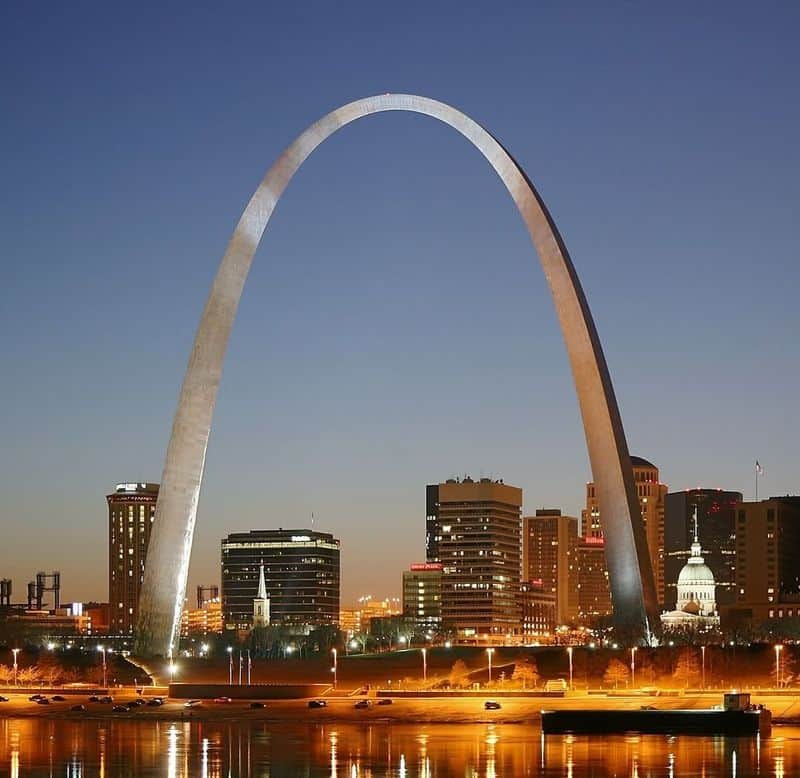
The Gateway Arch, completed in 1965, is a testament to Eero Saarinen’s visionary design. Rising 630 feet in St. Louis, it symbolizes the westward expansion of the United States.
This stainless steel monument is both an engineering marvel and a national symbol. Visitors can ascend to the top for breathtaking views of the city and beyond.
Saarinen’s sleek, minimalist design embodies the spirit of innovation and exploration.
The Gateway Arch remains a must-visit landmark, celebrating America’s pioneering spirit and architectural brilliance.
3. Zaha Hadid – Heydar Aliyev Centre
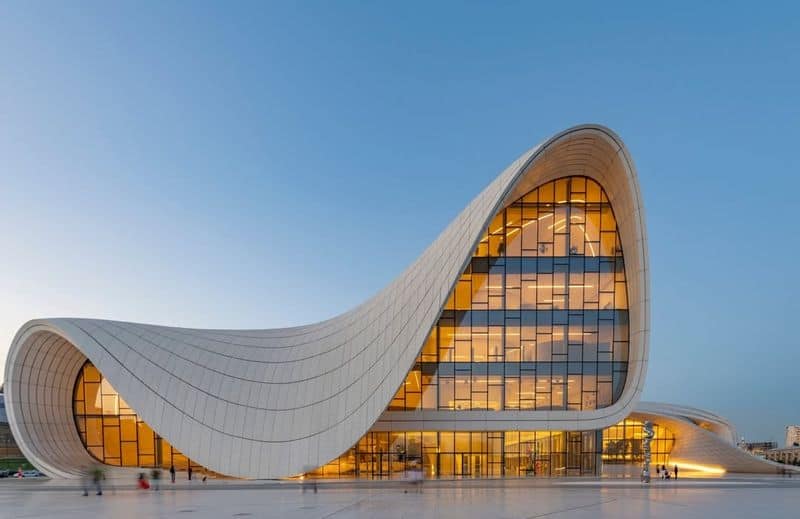
The Heydar Aliyev Centre, completed in 2012, showcases Zaha Hadid’s genius in fluid design and innovative forms.
Situated in Baku, Azerbaijan, the structure is renowned for its wave-like curves and seamless transitions, embodying the dynamic spirit of the region.
Inside, the centre hosts cultural events, exhibitions, and performances, serving as a hub for creative expression.
Its design challenges traditional architectural norms and celebrates the possibilities of modern technology.
Visitors often feel as if they are walking through a living sculpture, making it a must-visit for architecture enthusiasts.
4. I. M. Pei – Louvre Pyramid

I.M. Pei’s Louvre Pyramid, completed in 1989, serves as a contemporary entrance to the historic Louvre Museum in Paris.
Its bold design contrasts with the classical architecture, creating a harmonious blend of old and new.
The glass and metal pyramid has become an iconic symbol of modern Paris, attracting millions of visitors each year. Pei’s design enhances the museum’s accessibility while preserving its historic character.
The pyramid’s transparency allows natural light to illuminate the underground lobby, transforming the visitor experience and redefining museum architecture.
5. Frank Lloyd Wright – Solomon R. Guggenheim Museum
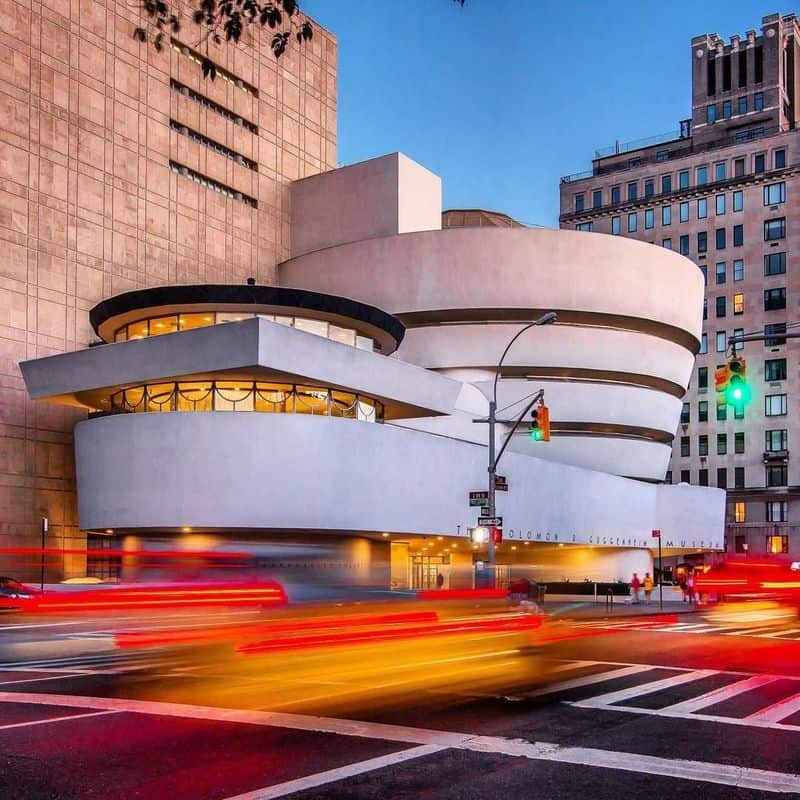
The Solomon R. Guggenheim Museum, opened in 1959, is a testament to Frank Lloyd Wright’s architectural genius.
Its unique spiral design revolutionized museum layouts, offering an innovative way to experience art.
Located in New York City, the Guggenheim attracts millions annually with its modern art collections and striking architecture.
Wright’s use of curves and open spaces challenges traditional forms, inviting visitors to explore art in a new light. This pioneering design remains influential, cementing Wright’s legacy as one of the most visionary architects in history.
6. Frank Gehry – Walt Disney Concert Hall
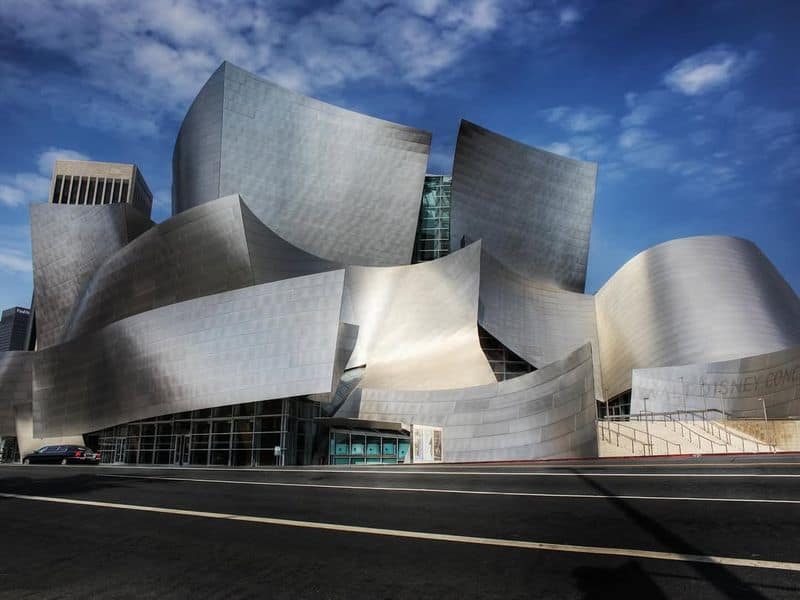
Frank Gehry’s Walt Disney Concert Hall, completed in 2003, is an iconic symbol of Los Angeles.
Its stainless steel exterior resembles a ship’s sails, reflecting the city’s vibrant culture. Inside, the acoustics are praised by musicians worldwide.
Visitors are often captivated by the organic forms and dynamic spaces that define Gehry’s work. The concert hall is not just a landmark in LA but a testament to Gehry’s imaginative spirit and the power of architecture to inspire.
It remains a favorite spot for tourists and locals alike, offering tours and performances that highlight its unique design.
7. Renzo Piano – Pompidou Centre
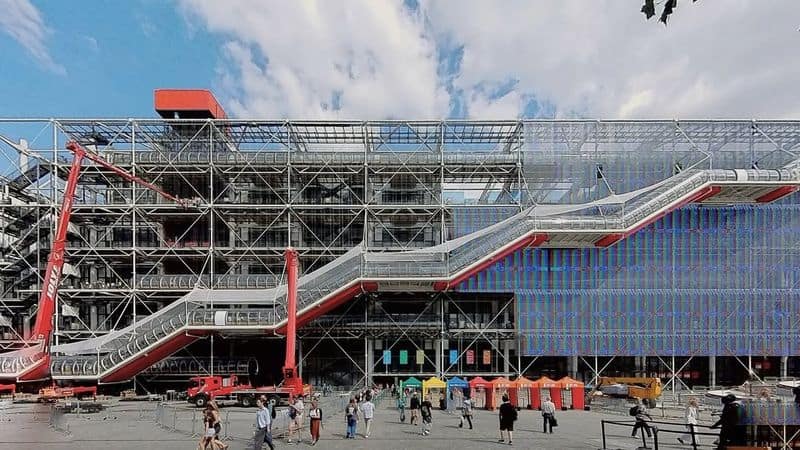
The Pompidou Centre, completed in 1977, is a bold statement in Paris, designed by Renzo Piano.
Known for its inside-out architecture, the building’s colorful exterior pipes and exposed structure defy conventional design rules.
It houses a vast public library, a modern art museum, and a music center, attracting millions of visitors each year.
The Pompidou has become a cultural icon in Paris, celebrated for its innovative use of space and materials.
Renzo Piano’s daring approach has left a lasting impact, making this a must-see for those interested in experimental architecture.
8. Jørn Utzon – Sydney Opera House
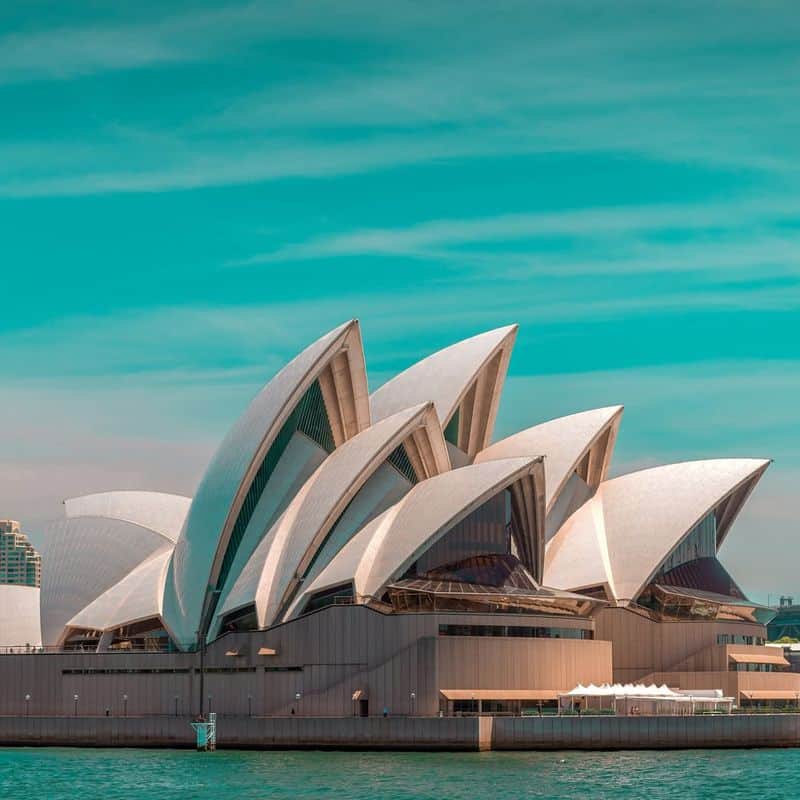
The Sydney Opera House, completed in 1973, is one of the world’s most recognizable buildings, designed by Jørn Utzon.
Its distinctive shell-like structures have become a symbol of Australia.
This architectural masterpiece hosts a variety of performances, from opera to contemporary music, drawing visitors from around the globe.
Utzon’s innovative approach combined engineering excellence with artistic beauty, earning the building a UNESCO World Heritage status.
The Opera House continues to inspire with its timeless design, making it a jewel on the Sydney skyline.
9. Daniel Libeskind – Jewish Museum
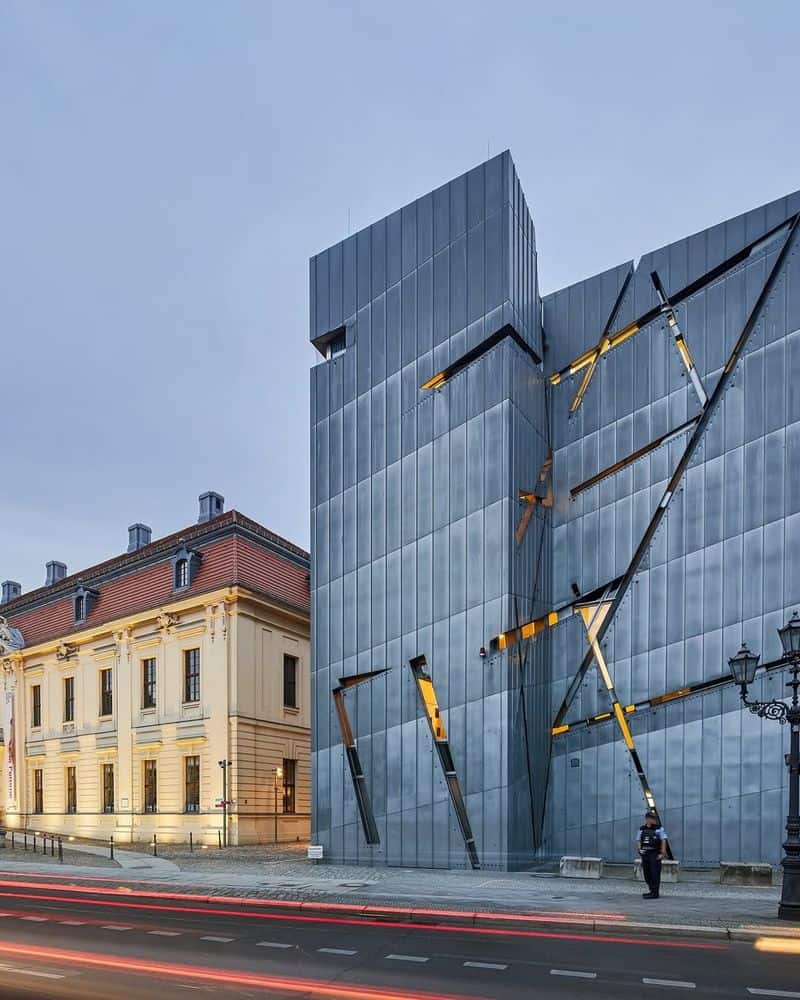
Daniel Libeskind’s Jewish Museum in Berlin, opened in 2001, is a powerful expression of history and memory.
Its zigzagging form and zinc facade are laden with symbolism, representing the fractured history of the Jewish people.
Inside, the museum offers a poignant journey through Jewish culture and history, engaging visitors with its immersive exhibits.
Libeskind’s design is both a memorial and a celebration of resilience, making it a significant cultural landmark.
The emotional impact of the architecture enhances the museum’s narrative, ensuring a memorable experience for all.
10. Norman Foster – 30 St Mary Axe
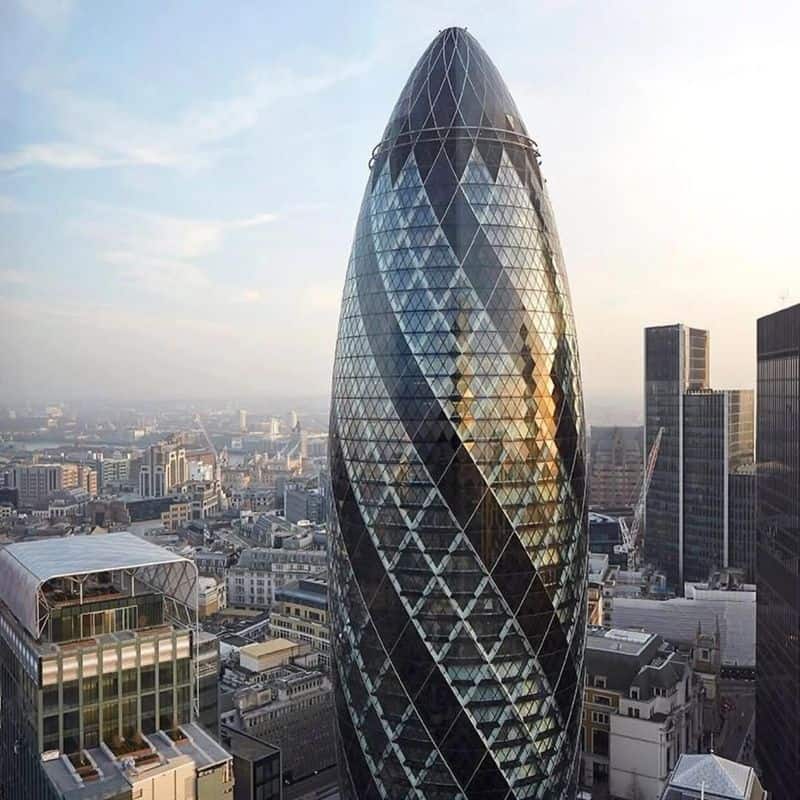
30 St Mary Axe, commonly known as “The Gherkin,” was completed in 2003 and stands as a modern icon in London’s skyline.
Designed by Norman Foster, its unique shape and energy-efficient design have garnered global acclaim.
The building’s glass facade and innovative structure reduce energy consumption, setting a standard for sustainable architecture.
It houses offices and offers panoramic city views from its top floors. Foster’s design merges functionality with aesthetic appeal, making it a centerpiece of London’s architectural landscape.
“The Gherkin” exemplifies the future of urban architecture.

